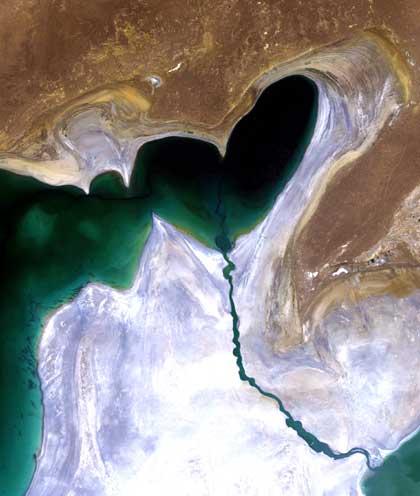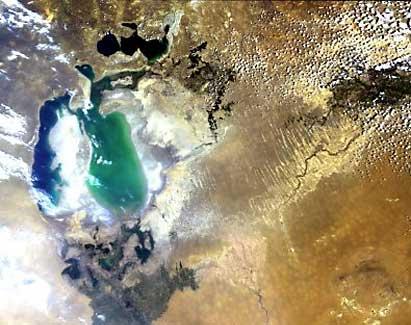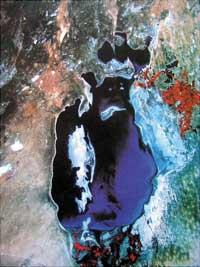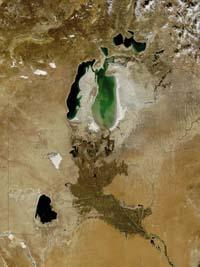Contracted heart of Central Asia
2010/11/16 Aulestiarte Lete, Izaro - Elhuyar Zientziaren Komunikazioa

The Landsat 5 satellite obtained the top image last July. In it, the cardiac aspect is the northern end of the western part of the Aral Sea. Located in Central Asia between Aral, Uzbekistan and Kazakhstan, it was once the fourth largest lagoon in the world, but in the last 50 years it is shrinking and drying, since the man, for irrigation reasons, diverted the flow of the rivers that flow there.
In the 1980s, when its main flows were interrupted, it was divided into two ancient lagoons (Aral Handia and Aral Txikia). In 2000 the Gran Aral split into two new stages. The construction of a junction dam between the northern and southern sections of the sea has allowed Aral to slowly recover the northern part of the sea. However, the problem is not fully resolved: the water in the southern lagoon has no great depths, so researchers believe it will evaporate by 2020.
The whitish area surrounding the lake (which can be seen clearly in the image) is currently a large salt ground field, called Aralkum. In the desert, strong storms of sand and salt are generated annually, moving 150,000 tons of salt and sand. These storms also affect the health of the inhabitants of the region.
Image courtesy of: USGS.

Gai honi buruzko eduki gehiago
Elhuyarrek garatutako teknologia






